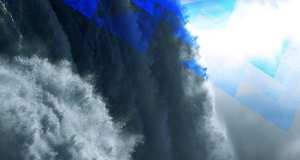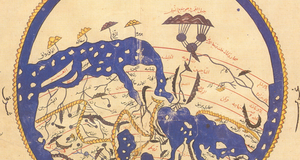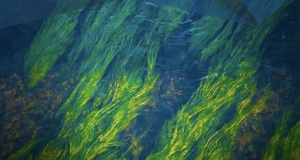From Interstate - Journal of International Affairs VOL. 2010/2011 NO. 1Transnational Waterstreams in the Middle East
By
Interstate - Journal of International Affairs 2011, Vol. 2010/2011 No. 1 | pg. 1/1
IN THIS ARTICLE
Access to water has been a major factor in international relations for many centuries, particularly in the Middle East and North Africa1, a region that can regularly run out of adequate water resources.2 After the emergence of nation-states in the region, many states created their own differing hydro-policies, creating an uneasy situation characterised by a lack of cooperation and a struggle for freshwater resources. Consequently, the conflict over water has become one of the distinguishing features of the contemporary Middle East. This essay examines transnational water streams as a point where security studies and environmental politics overlap. Political conflicts in the Middle East drive states into this particular issue, concerning every other aspect of the question posed here. In the course of this essay, we will first consider the links between hydro-power and security. Secondly, environmental factors will be considered, and finally, efforts to create a programme of sustainable development in the Middle East will be touched upon. I - Hydroelectric Power and Surrounding Issues: Rivers and EnergyDue to its direct connection with economic power, control of water resources has been a crucial issue for Middle Eastern states throughout their history. Human alteration of water streams can be traced back to around 3000 BC, when the Jawa Dam was constructed in what is now Jordan. However, those constructions were mainly used to control water levels and aid irrigation.3 The recognition of petroleum as a strategic raw material and the beginning of the “mega-dam” age in the early twentieth century has highlighted new aspects of this issue. As its importance has grown, examination of hydro-energy production in the Middle East has commenced in a variety of fields, from engineering to economics. Research from various academic disciplines tends to approach its examination from different positions, leading to a great diversity of conclusions. The technical aspects of the subject can offer theoretical solutions; however, many of them are rendered impossible by the impasses generated by ongoing conflicts in the region.4 Hydro-power in the Middle East is a suitable focus for study as it covers and illustrates many parts of international relations in this region. The first problem encountered in energy production originates from the unbalanced relationship between geographic attributes and financial development in the region. Several figures show an uneven distribution of electricity production between neighbouring states. For example, the Tigris River is situated in Turkey (21 per cent) and Iraq (31 per cent) - however, Turkey’s share in hydro-power is far higher5 since some states produce energy at a rate which is disproportionate to the length of river in their national territory. This gap in figures originates in the serious differences in economic development between riparian states of the Middle East. Initial investment required for a large-scale hydro-electric power station are particularly high when compared to traditional coal burning power plants and even after construction, dams need continuous expenditure. Relatively economically developed states use a disproportionate amount of water resources in the region. A good example of varying levels of development in the region is that of Israel and Iraq. Israel (the water policies of which ‘contrast with those of its neighbours and of Middle East economies generally’7) uses a slightly smaller proportion of its water for agriculture while using more for industrial and commercial use. In contrast, Iraq’s water facilities have been in a ‘condition of despair’ since the First Gulf War.8 Iraq’s development has come to a standstill as a result of military conflicts, preventing further improvement in its water policies. In another example, Turkey’s south-eastern region has a higher “power potential” (e.g. maximum amount of possible electricity production) compared to its neighbouring states, and this was extensively exploited in socio-economic development projects.9 In order to prevent further inequality between Turkey and its southern neighbours diplomatic steps are taken to balance the use of this resource, as Turkey now promises a minimum amount of water flow every year. Yet differences generated by geographical factors are still contributing to the political instability as a final consensus is not achieved. Upon recognising that political contention around transnational streams has been constant for decades, some nations in the Middle East have considered alternatives. This is not easy however: first, other renewable energy sources are too expensive to be used by many states in the region, with the exception of Israel; second, nuclear power is generally considered dangerous because of its ability to cause serious shifts in the balance of power, as seen in the example of Iran and the political controversy surrounding it. The only alternative is burning fossil fuels, which is very harmful to the environment and will become increasingly dangerous as the population of the Middle East continues to rise. Furthermore, since the Middle East lacks the high quality coal reserves required for the long term, hydro-electric power is likely to remain important in the short term. II - Security Problems Generated by Water ControlAn examination of the increasing importance of dams can be made with reference to disciplines other than economics. Dams by their very nature are large scale, multi-purpose construction projects. They supply energy, and create reservoirs which may be used in agriculture, and to provide drinking water. Consequently, every dam is of strategic importance and has to be protected. The Second World War showed that dams are especially vulnerable to air attacks. ‘Operation Chastise’, a bombing raid conducted by Royal Air force in 1943 successfully breached two German dams; not only causing disruption in production but also killing more than a thousand people.10 Additionally a “dam failure” might have serious consequences, without any aggression being present. A breach in one of the bigger dams located on the Tigris-Euphrates basin might cause floods in several major cities of Turkey, Syria or Iraq depending on the location of breach.11 Thus, dams today are considered as a part of both civil and military defence doctrines. The protection of dams is a challenge for many states especially in the Middle East due to the relatively small size of the region. Owing to the close proximity of national borders and dams, many of them are within the range of modern jet aircraft that could attack from a neighbouring state. A recent example of security crisis has occurred in South-Eastern Turkey, when the Turkish government ordered the construction of Atatürk Dam. As a response to Syrian and Iraqi air threats, heavy anti-aircraft installations were deployed to dams and construction sites in south-east Turkey, which are amongst the most heavily protected in the world.12 Water streams in Israel and Egypt are also protected due to the instability of the surrounding region. This insecurity also attracts international attention; for example the World Bank stopped supporting water engineering projects in the region after the territorial disputes between Egypt and Sudan.13 Furthermore, the ability to control water streams enables a country to limit water access of the countries downstream from it, thus rendering water a type of “weapon”. On the other hand, at least superficially, the problem can be resolved by international agreements guaranteeing the flow of water in a certain amount of cubic meters. 14 IV - Environmental Impact of Water ControlDespite the concern shown about the economic and security aspects of the subject, the environmental politics of controlling transnational water streams is not usually given much attention by policy makers. After the first wave of dam construction in the twentieth century, it has become evident that hydropower is not as “green” as was first thought. ‘Hydroelectric dams produce significant amounts of carbon dioxide and methane, and in some cases produce more of these greenhouse gases than power plants running on fossil fuels.’15 Environmentalist claims are usually countered by the need of developing countries for more energy. Hydro-electric power is considered “renewable”, hence making it a more suitable choice according to public opinion.Two major factors exist on the specific subject of water control and the environment. Firstly, it usually concerns dams, which necessitate the flooding of a huge area in order to create an artificial reservoir. It brings fundamental changes to the local ecosystem most often in negative terms, such as destroying flora and fauna in the area - although the impact of reservoirs on nature is still being researched in various fields. Secondly, alteration of a river might require the relocation of rural population and/or flooding of cultural heritage sites. Sixty thousand people needed to be relocated because of the creation of Lake Nasser in Egypt, causing a serious population shift.17 As a region that contains some of the oldest civilizations, many reservoirs have flooded historical sites. In Turkey, construction of the Ilısu Dam has been met with critical reception by the media, due to possible destruction of the Hasankeyf Ruins.18 V - Sustainable DevelopmentCurrent figures showing the amount of water per person already identify the Middle East as an “arid” region. Due to the use of “low-technology” agriculture, the amount of agricultural output changes every year; because the level of available water changes from year to year and season to season. Estimates for future figures show that the amount of water per person will show a dramatic decrease in the next 20 years. For example, from 470 cubic meters in 1990 to a projected amount of 310 in Israel.19 The insecure future of water access presents the question of whether a form of sustainable development in the Middle East is possible or not, as “[t]he Middle East’s hydrological system is definitely less and less able to meet the rising demands being placed upon it.”20 The population of the Middle East is increasing faster than the growth and development of infrastructure. Many states are not ready for an urbanization process brought on by development, in turn causing a limited access to water especially in poor regions. In addition, an increasing number of industrial establishments will require more water and energy in the future. Without proper energy alternatives, water politics in the region might become more unstable in the near future. It should be noted that factories and excessive farming in one country directly affects others, since the depletion of minerals in a flowing stream can damage farming downstream. Thus, riparian countries are interdependent in terms of development. Such differences in policy making between states evolves from a clash of paradigms. While water is generally considered as a natural/strategic resource by states, the debate over it has been perceived differently at the international system level. States are not the only actors in water disputes since international organizations have started to play a more active role after the Cold War. World Bank reports have argued that it is possible to overcome water problems via international cooperation.21 Nevertheless, there is no widely recognized law on transnational water control and it is mostly policed by bilateral agreements. On the other hand, the United Nations has recognized access to fresh water as a human right, referring it as a “prerequisite” for many other rights.22 However, construction of new dams gives rise to a more complex problem, since they are not built for purely humanitarian purposes. A potential solution can be found in academic work on a “water ethic”, but it is still in its infancy.23 This thesis argues that “[w]ater is not a commercial product like any other but, rather, a heritage that must be protected”.24 Nevertheless, the application of such ideals to the Middle East is problematic because there is no consensus on water issues, particularly when compared to their counterparts in the European Union. A clash of paradigms endures, but there are exceptions such as the preservation of natural reservoirs in Northern Iraq as an unexpected result of Iraq War in 2003.25 VI - ConclusionIn this essay, the interconnectedness of security and environmental questions in the Middle East has been discussed in two ways. Environmental politics is a discipline that is becoming more and more important in the twenty first century, as awareness of environmental issues grows and the need for better organizations in order to deal with depleting resources. Arguments regarding hydro-power and its relation to transnational streams inhabit a crucial role in this matter, since understanding the problematic nature of water resources constitutes an important part of understanding international relations in the Middle East as a whole. Endnotes
Suggested Reading from Inquiries Journal
Inquiries Journal provides undergraduate and graduate students around the world a platform for the wide dissemination of academic work over a range of core disciplines. Representing the work of students from hundreds of institutions around the globe, Inquiries Journal's large database of academic articles is completely free. Learn more | Blog | Submit Latest in Political Science |



















